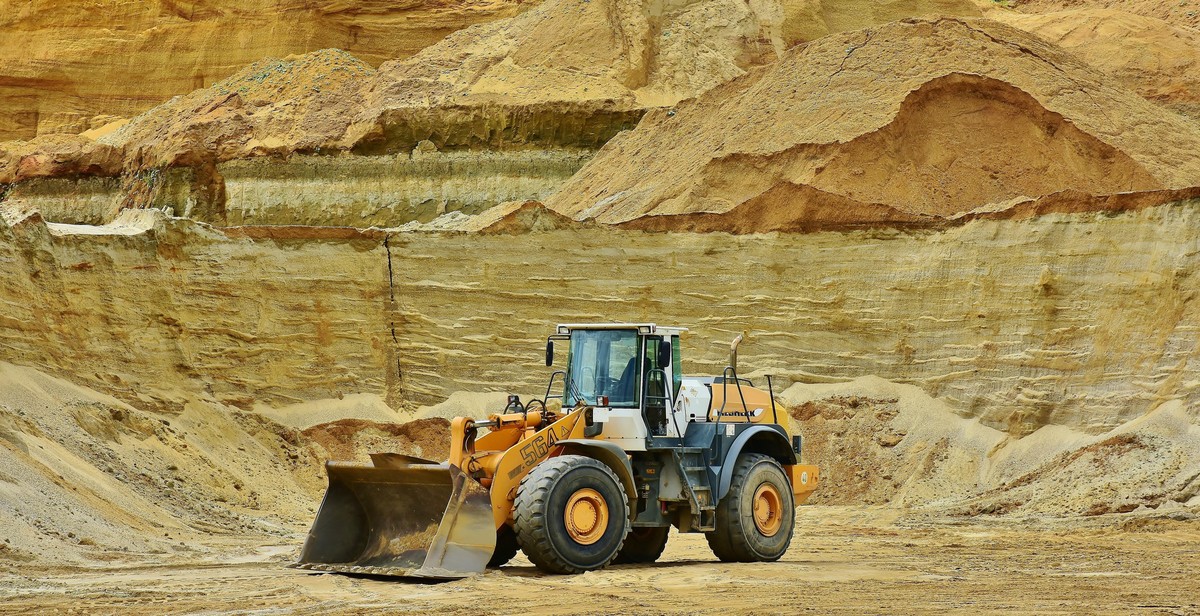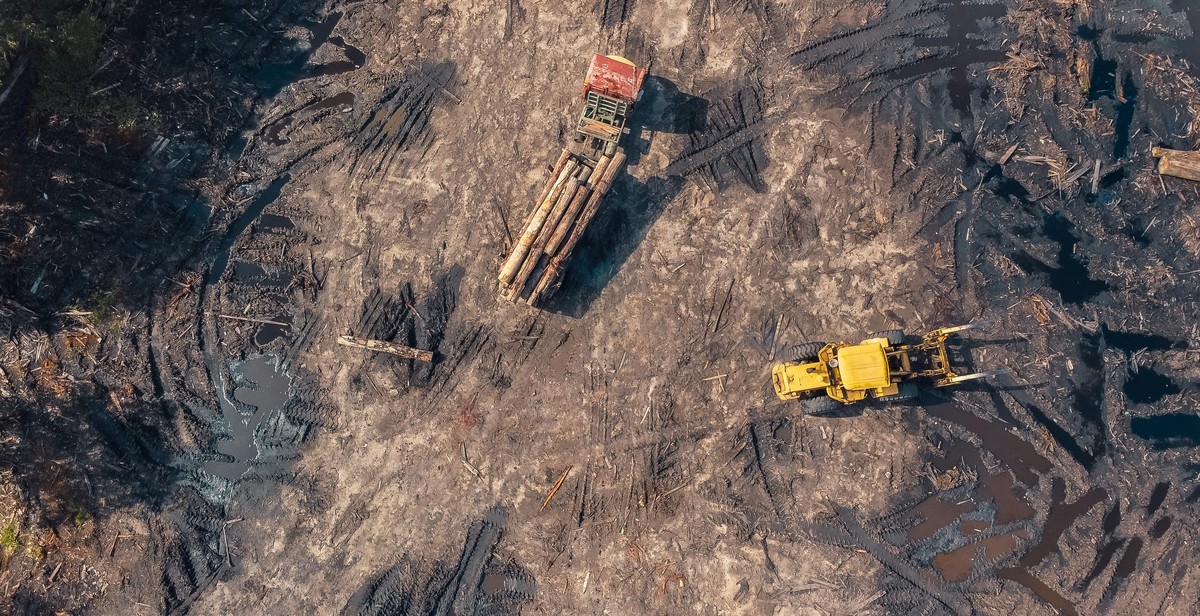The effects of deforestation on the environment
Deforestation is the process of clearing trees and forests on a large scale, resulting in a significant loss of tree cover. This practice has become a major environmental concern due to its negative impact on the environment. Deforestation affects not only the natural habitats of animals and plants, but also the quality of the air we breathe, the water we drink, and the climate we live in.
Causes of deforestation
Deforestation is caused by human activities such as logging, agriculture, mining, and urbanization. These activities contribute to the loss of valuable forests, which are home to a wide range of plant and animal species. The demand for wood and paper products also contributes to deforestation, as trees are cut down to make these products.
Effects of deforestation
The effects of deforestation are far-reaching and devastating. Deforestation leads to soil erosion, loss of biodiversity, and climate change. It also contributes to the destruction of natural habitats, which can lead to the extinction of animal and plant species. Deforestation also affects the local communities who depend on forests for their livelihoods.
It is important to address the issue of deforestation and take action to reduce its impact. This can be done through sustainable forestry practices, reforestation efforts, and reducing the demand for wood and paper products. By taking these steps, we can help preserve our natural resources and protect the environment for future generations.

What is Deforestation?
Deforestation is the deliberate or natural removal of trees and other vegetation from a forested area. It is a process that involves the clearing of forests for agricultural, industrial, and urban use. Deforestation leads to the loss of ecosystem services, biodiversity, and the livelihoods of millions of people who depend on forests for their survival.
The Causes of Deforestation
Deforestation is caused by a variety of factors, including:
- Agriculture: Farmers clear forests to create farmland for crops and livestock.
- Logging: Trees are harvested for timber and other wood products.
- Mining: Forests are cleared to make way for mining operations.
- Urbanization: Forests are cleared to make way for cities and other urban areas.
- Climate Change: Climate change can cause forests to dry out and become more susceptible to wildfires, which can lead to deforestation.
The Effects of Deforestation
Deforestation has a number of negative effects on the environment, including:
- Loss of Biodiversity: Deforestation destroys habitats and ecosystems, leading to the loss of plant and animal species.
- Soil Erosion: When trees are removed, the soil is exposed to erosion from wind and rain, which can lead to desertification and the loss of fertile land.
- Climate Change: Deforestation contributes to climate change by releasing carbon dioxide into the atmosphere and reducing the amount of carbon dioxide that forests can absorb.
- Water Cycle Disruption: Trees play a crucial role in the water cycle by absorbing and releasing water. Deforestation disrupts this cycle, leading to changes in rainfall patterns and water availability.
- Social and Economic Impacts: Deforestation can have serious social and economic impacts, particularly on indigenous communities and people who rely on forests for their livelihoods.
Conclusion
Deforestation is a serious environmental issue that has far-reaching impacts on the planet. It is important that we take action to reduce deforestation and protect our forests for future generations.

Causes of Deforestation
Deforestation refers to the deliberate removal of trees and forests, leading to the conversion of land for other purposes. The causes of deforestation are numerous and complex, but some of the most significant include:
Agriculture and Livestock Farming
Agriculture and livestock farming are responsible for the majority of deforestation worldwide. As the global population continues to grow, there is an increasing demand for food and other agricultural products. To meet this demand, farmers clear large areas of forests to create farmland and pasture for livestock. The use of slash-and-burn techniques, where farmers burn the vegetation to clear the land, is also a common practice.
Logging
Logging is another major cause of deforestation. Trees are cut down for their timber, which is used for building materials, paper, and other products. Illegal logging is particularly problematic, as it often involves the destruction of protected forests and the displacement of indigenous people.
Mining
Mining operations also contribute to deforestation. Trees are cleared to make way for mining infrastructure, such as roads, power lines, and processing plants. The extraction of minerals and other resources can also cause soil erosion and water pollution, further damaging the environment.
Infrastructure Development
The construction of roads, dams, and other infrastructure projects can also lead to deforestation. Large areas of forest are often cleared to make way for these projects, which can have significant environmental impacts. For example, the construction of a dam can flood large areas of forest, displacing wildlife and disrupting ecosystems.
In conclusion, deforestation is a complex issue with multiple causes. While agriculture and livestock farming are responsible for the majority of deforestation, logging, mining, and infrastructure development also play significant roles. It is important to address these causes and work towards sustainable solutions to protect our forests and the environment.

Effects of Deforestation on the Environment
Deforestation is the process of clearing forests or trees permanently to make space for agriculture, urbanization, or any other human activities. The effects of deforestation on the environment are numerous and far-reaching.
Climate Change
Deforestation is one of the leading causes of climate change. Trees absorb carbon dioxide, a greenhouse gas that contributes to global warming. When trees are cut down, the carbon stored in them is released into the atmosphere, contributing to the increase of carbon dioxide levels. Deforestation is responsible for about 15% of global greenhouse gas emissions, making it a major contributor to climate change.
Loss of Biodiversity
Forests are home to millions of species of animals, plants, and insects. Deforestation destroys their habitats, causing a loss of biodiversity. The extinction of species is a significant consequence of deforestation. It is estimated that 80% of the world’s species live in forests, and deforestation is threatening their survival.
Soil Erosion and Desertification
Forests play a crucial role in preventing soil erosion and desertification. Tree roots hold soil in place, preventing it from being washed away by rain or blown away by wind. Deforestation can lead to soil erosion and desertification, making it difficult for plants to grow and leading to the loss of fertile land.
Water Cycle Disruption
Forests play a vital role in the water cycle. Trees absorb water from the soil and release it into the atmosphere through a process called transpiration. Deforestation disrupts the water cycle, leading to a decrease in rainfall and an increase in soil erosion. This can have a severe impact on agriculture, as crops require adequate water to grow.
| Effects of Deforestation | |
|---|---|
| Climate Change | 15% of global greenhouse gas emissions |
| Loss of Biodiversity | 80% of the world’s species live in forests |
| Soil Erosion and Desertification | Can lead to soil erosion and desertification, making it difficult for plants to grow and leading to the loss of fertile land |
| Water Cycle Disruption | Disrupts the water cycle, leading to a decrease in rainfall and an increase in soil erosion |

Solutions to Deforestation
Deforestation has significant impacts on the environment, including soil erosion, climate change, loss of biodiversity, and disruption of water cycles. However, there are several solutions to deforestation that can help mitigate its effects.
Reducing Demand for Deforestation Products
One of the most effective ways to reduce deforestation is to reduce the demand for products that cause it. Some of the products that contribute to deforestation include palm oil, beef, soy, and timber. Consumers can make a difference by choosing products that are sustainably sourced, such as those certified by the Forest Stewardship Council (FSC) or the Roundtable on Sustainable Palm Oil (RSPO). By supporting sustainable products, consumers can help reduce the demand for products that cause deforestation.
Conservation and Reforestation
Conservation and reforestation can also help mitigate the effects of deforestation. Conservation efforts can target areas of high biodiversity, protecting them from further destruction. Reforestation involves planting trees in areas that have been deforested. This can help restore ecosystems and promote carbon sequestration, which can help mitigate climate change.
Government Policies
Governments can also play a role in reducing deforestation. Policies such as land-use planning, protected area management, and forest restoration can help reduce deforestation rates. Additionally, governments can provide incentives for sustainable land use practices and penalize those who engage in destructive practices.
Corporate Social Responsibility
Corporate social responsibility (CSR) can also help reduce deforestation. Companies can adopt sustainable sourcing practices and work with suppliers to ensure that their products are sustainably sourced. Additionally, companies can invest in conservation and reforestation efforts in areas where they operate.
Conclusion
In conclusion, deforestation has significant impacts on the environment, but there are several solutions that can help mitigate its effects. By reducing demand for deforestation products, promoting conservation and reforestation, implementing government policies, and practicing corporate social responsibility, we can work towards a more sustainable future.

Conclusion
In conclusion, deforestation has significant effects on the environment, including climate change, loss of biodiversity, soil erosion, and disruption of water cycles. The devastation of forests has led to the extinction of many animal and plant species, and the degradation of the soil has resulted in decreased crop yields. Additionally, deforestation contributes to the release of greenhouse gases, which are responsible for global warming and climate change.
It is, therefore, essential to take measures that will reduce deforestation and promote sustainable forest management. This can be achieved through the implementation of policies and regulations that protect forests, such as the creation of protected areas and the enforcement of laws against illegal logging. Additionally, promoting sustainable agriculture and reducing the demand for products that contribute to deforestation, such as palm oil and beef, can also help to address the issue.
It is crucial that individuals and governments alike recognize the importance of forests and take action to protect them. The benefits of forests, such as providing clean air and water, mitigating climate change, and supporting biodiversity, far outweigh any short-term economic gains that may result from their destruction. By working together to address the issue of deforestation, we can ensure a sustainable future for ourselves and future generations.
References
- Food and Agriculture Organization of the United Nations. (2016). The State of the World’s Forests 2016. Retrieved from http://www.fao.org/3/a-i4793e.pdf
- Global Forest Watch. (n.d.). Deforestation. Retrieved from https://www.globalforestwatch.org/topics/deforestation
- World Wildlife Fund. (n.d.). Deforestation: Overview. Retrieved from https://www.worldwildlife.org/threats/deforestation-and-forest-degradation
